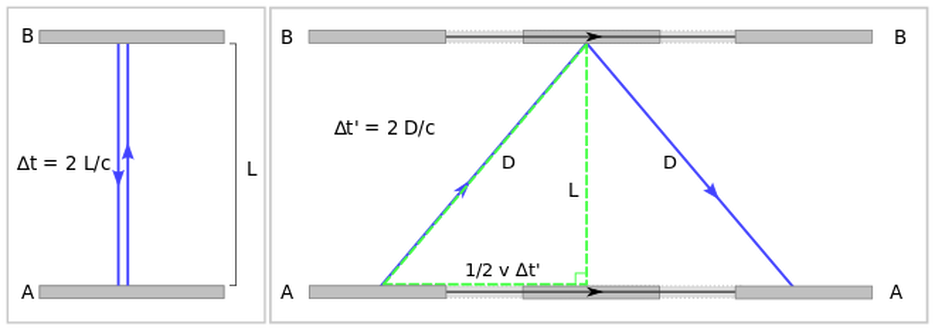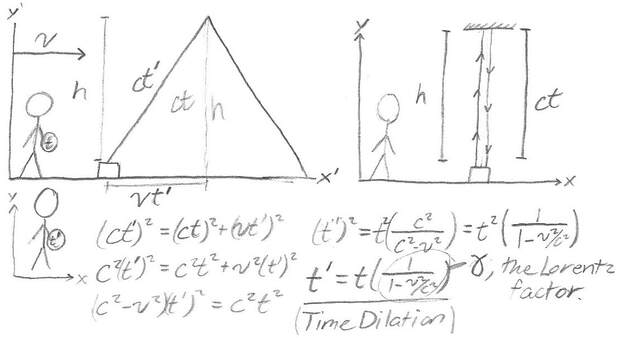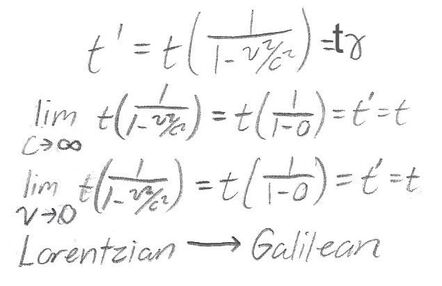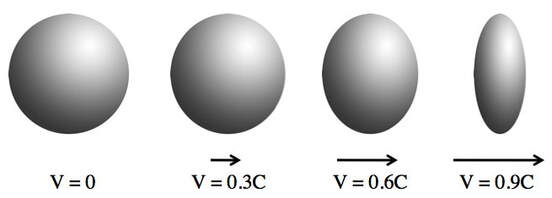Einstein and The Theory of Special Relativity
In 1905, German physicist Albert Einstein published On the Electrodynamics of Moving Bodies (Originally: Zur Elektrodynamik bewegter Körper), borrowing ideas from Lorentz’s Ether Theory, the previous work of Henri Poincaré’s “relativity principle,” and the experimental data of the Michelson-Morley experiment. With these bases, Einstein formed, what we now call today, the theory of special relativity. Though built on Lorentz’s theory, special relativity was another form of describing the same ideas, just in a way that was mathematically and structurally different. The theory was built on the foundation of two postulates:
The laws of physics are the same for all observers in any inertial frame of reference relative to one another. (principle of relativity).
The speed of light in a vacuum is the same for all observers, regardless of their relative motion or of the motion of the light source.
But how is this possible? Using a Galilean transformation, the speed of light must be added to the velocity of the light source, but as it was proven earlier, the speed of light must be invariant in all inertial reference frames. This is because the Galilean transformation is a good approximation for velocity addition at speeds much less than the speed of light, but becomes inaccurate at relativistic speeds.

The Lorentz Factor Synthesis
The correct transformation is called the Lorentz transform (or Lorentz factor), because it takes into account how the speed of light is always a constant speed in all reference frames;.


Implications
As the speed of an object gets closer to zero, or if the speed of light becomes infinite, then the Lorentz transform becomes the Galilean transform.
This is why the Galilean transform is a very good description of motion at non-relativistic speeds.

https://www.askamathematician.com/2011/01/q-why-does-lorentz-contraction-only-act-in-the-direction-of-motion/
Visual Effects
The Lorentz factor is the most integral part of special relativity, as the transformation of space leads to many weird consequences of the world around us. As the speed of an object approaches the speed of light, length contraction and time dilation occur, meaning that objects are measured to be shortened in the direction that they are moving and moving clocks are measured to tick slower with respect to the outside observer.
The intuitive notion of simultaneity, that events happen at the same time, is also skewed by the Lorentz factor, as a moving reference frame may experience two simultaneous events as happening at two separate "times". Though events in space-time are the same, the position and time would likely vary.
Massive objects (objects with mass), cannot travel at or beyond the speed of light, due to the Lorentz factor becoming infinitely large or imaginary, while the effect of electromagnetism and other massless phenomena can only travel at the speed of light.

https://energywavetheory.com/equations/epc/
The Energy-Momentum Relation
The equation of mass-energy equivalence, Einstein’s most famous equation, E=mc², is also a result of special relativity, and also predicts the idea of relativistic mass (inertial mass, not gravitational), meaning that massive objects gain more mass as they travel closer to the speed of light. More generally, objects follow a conservation law called the Energy-Momentum relation.